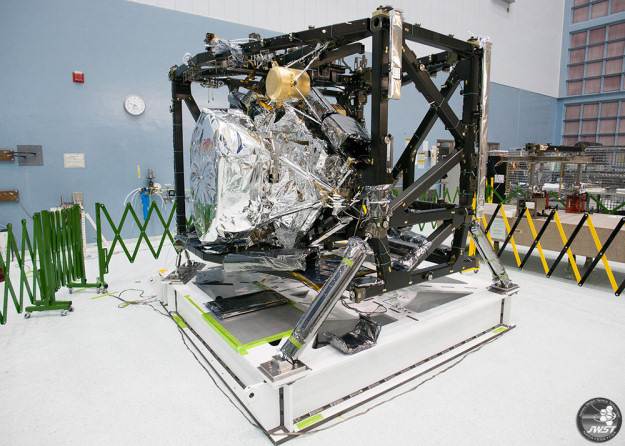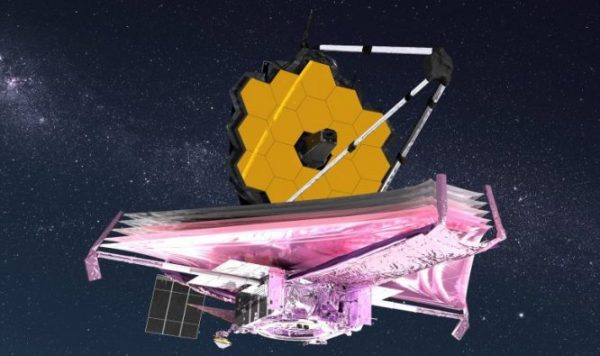On April 7, the Webb Mid-Infrared Instrument (MIRI), a joint development by NASA and the European Space Agency (ESA), reached an ultimate operating temperature of less than 7 Kelvin (-447 degrees Fahrenheit or -266 degrees Celsius).
The MIRI, along with Webb’s other three tools, was first cooled in the shade of Webb’s tennis court-size sun shield, dropping to around 90 Kelvin (-298 degrees Fahrenheit or -183 degrees Celsius).
However, to bring the temperature down to 7 Kelvin or less, an electrically operated cryogenic cooler was required. Last week, the team went through a particularly difficult stage called the “pinch point” when the device went from 15 Kelvin (-433F or -258C) to 6.4 Kelvin (-448F or -267C).
“The MIRI chiller team put a lot of work into developing the pinch point phase,” said Analyn Schneider, MIRI project manager at NASA’s Jet Propulsion Laboratory in Southern California. “The team was both excited and nervous ahead of an important event. In the end, the textbook procedure was followed, and the performance of the cooler exceeded expectations,” she said.

Read more: 100 Galaxies At a Time, Read To Know How James Webb Has Made It Possible
Why are Low Temperatures Required For Proper Functioning Of MIRI?
First Reason-
The low temperature is necessary because all four of Webb’s instruments detect infrared light wavelengths a little longer than those that human eyes can see. Distant galaxies, stars hidden in cocoons of dust, and planets outside our solar system all emit infrared light.
But so do other warm objects, including Webb’s own electronics and optics hardware. Cooling down the four instruments’ detectors and the surrounding hardware suppresses those infrared emissions.
Since MIRI detects longer infrared wavelengths than the other three instruments, that is why it needs to be even colder.
Second Reason-
Another reason Webb detectors need to be cooled is to suppress a phenomenon called dark currents, or currents, created by the vibrations of atoms in the detector itself.
The dark current mimics the real signal from the detectors, giving the false impression of being detected by light from an external source. These false signals can drown out the real signals that astronomers are looking for.
Because temperature is a measure of how quickly the atoms in the detector vibrate, lowering the temperature reduces the vibration and reduces the dark current.
Because MIRI’s ability to detect longer infrared wavelengths makes it more sensitive to dark currents, it needs to be cooler than other instruments to completely eliminate this effect.
For every 1 degree increase in the device’s temperature, the dark current increases by about a factor of 10.
Read: How Does Webb Telescope’s MIRI Detectors Stay Cold to Operate Properly?
Tests Conducted By The Scientists On MIRI
When the MIRI reaches 6.4 Kelvin, the scientists will start a series of tests to make sure the detector is working properly. Much like a doctor looking for signs of disease, the MIRI team looks at data that describes a device’s condition and then issues a series of commands to the device to see if it can do its job correctly.
This milestone is the culmination of the work of scientists and engineers at organizations outside of JPL, including Northrop Grumman, who built the cryogenic cooler, and NASA’s Goddard Space Flight Center, which integrated the cooler and MIRI into the rest of the observatory.
Mike Ressler, MIRI Project Scientist at JPL, said: “We followed orders and confirmations for the development of MIRI and spent years training for this moment. It was like a movie script. Everything we had to do was recorded and rehearsed. When the test data came in, I was happy to see that everything looked exactly as expected and had the working tools.”
Challenges For The MIRI Instrument
Before MIRI begins its scientific mission, the team still has many more problems to solve. Now that the instrument is at operating temperature, team members take test images of stars and other known objects that can be used to calibrate and verify the operation and functionality of the equipment.
The team will do preparations this summer, along with calibrations of three other devices that provide Webb’s first scientific images.
Alistair Glass, MIRI Metrology Specialist at the UK Astronomical Technology Center (ATC) in Edinburgh, Scotland, said, “I am very proud to be part of a very motivated and passionate group of scientists and engineers from across Europe and America.”
This period is our fiery test, but it is already clear to me that the personal relationships and mutual respect we have built over the past few years will help bring a fantastic tool to the market in the coming months to the astronomy community of the world.
Conclusion
NASA’s James Webb Space Telescope will see the first galaxies formed after the Big Bang, but to do so, the equipment must first cool.
The James Webb Space Telescope is an international program led by NASA and its partners ESA and the Canadian Space Agency.
MIRI was developed as part of the 50-50 partnership between NASA and ESA. JPL is leading the US effort to create MIRI, and a multinational consortium of European astronomy institutions is contributing to ESA. George Ricke of the University of Arizona leads the MIRI Scientific Group. Gillian Wright is MIRI’s Lead European Research Fellow.
UK ATC’s Laszlo Tamas manages the European consortium. The development of the MIRI cryogenic cooler was led and managed by JPL in collaboration with Northrop Grumman of Redondo Beach, California and NASA’s Goddard Space Flight Center in Greenbelt, Maryland.
